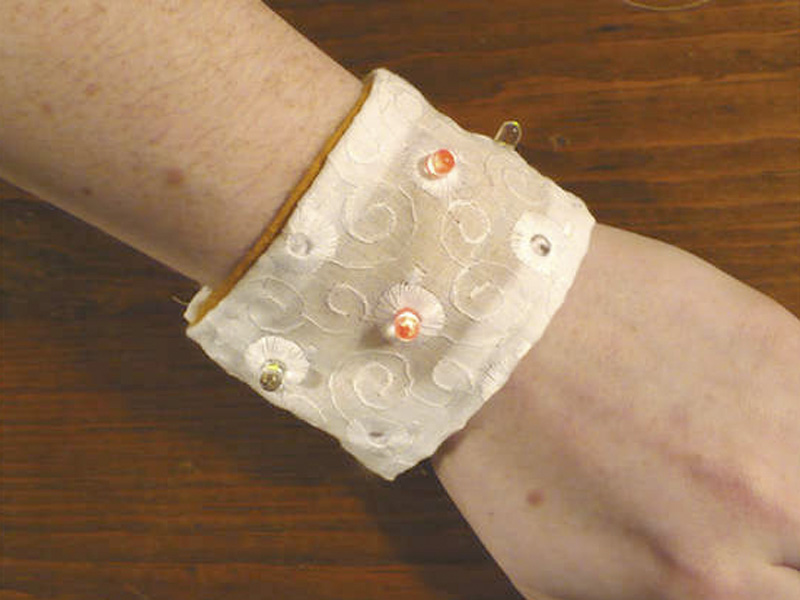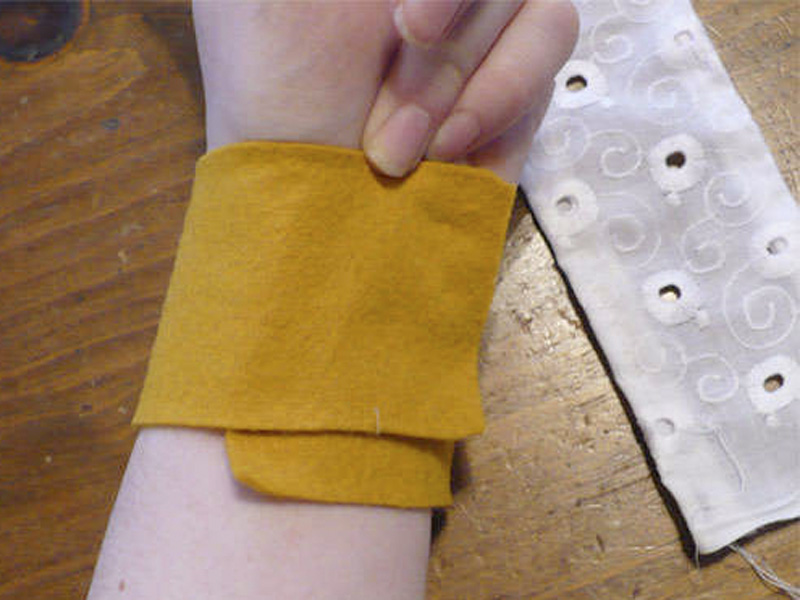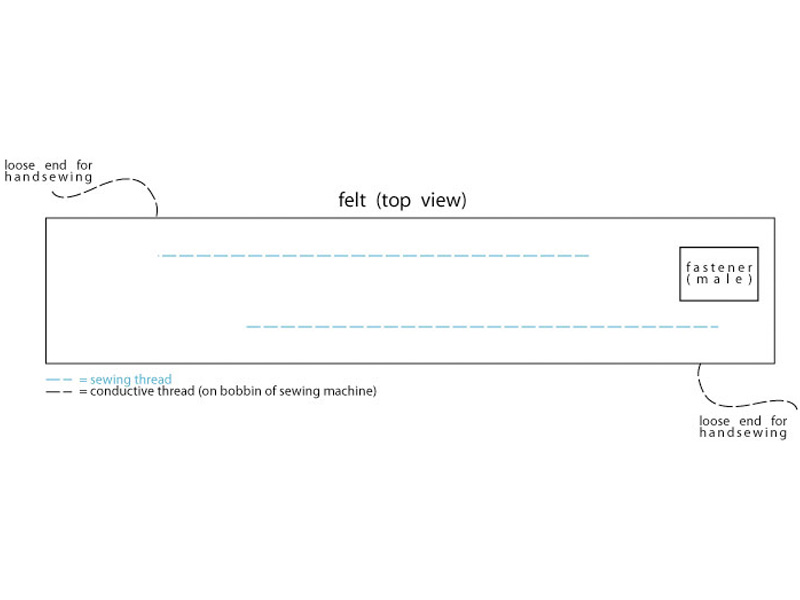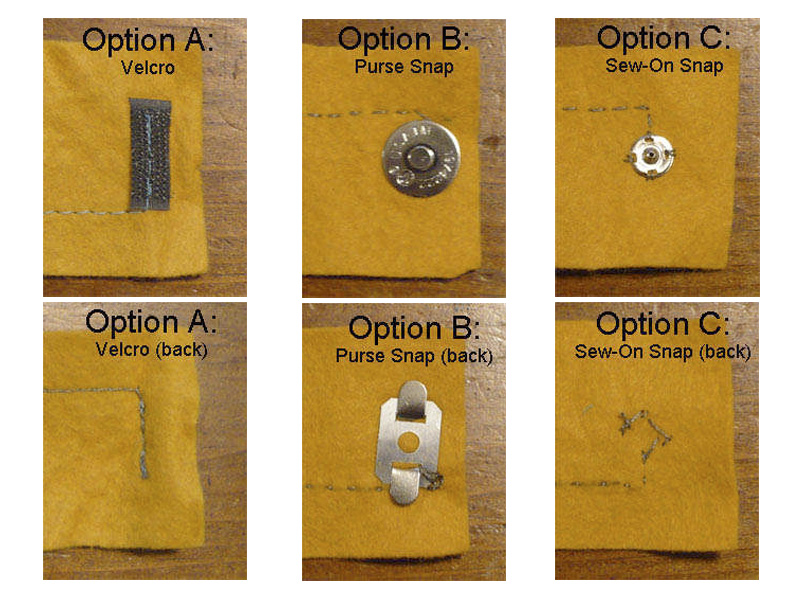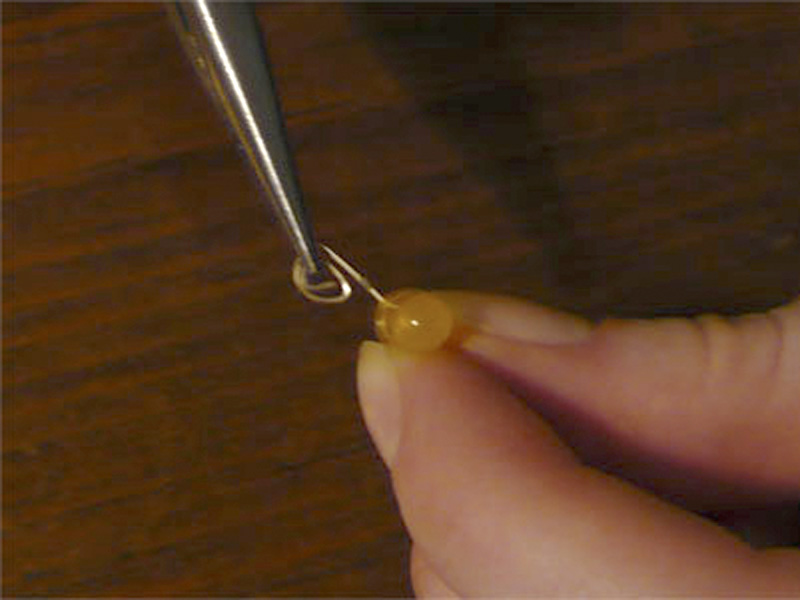Lay the felt out on a table with the conductive thread facing down. Using the extra thread on the right end of the felt strip, sew on your choice of fastener.
For Velcro, cut a small strip of conductive Velcro and position underneath the end of the felt (as shown) and hand-sew. You can also sew the Velcro on when you are sewing the power lines (it is a bit tough to pin through, but will work in the machine). Make sure you loop a few times so that the thread and Velcro have a secure connection (for power purposes).
For purse snaps, cut two small holes and push the “male” snap through. Slide the metal backing over the prongs. Use your conductive thread and loop a few times through the backing before you bend the prongs down (otherwise it will be hard to get the needle through if you bend first). As with the Velcro, make sure you have a strong connection.
For sew-on snaps, position as with the Velcro and sew on with the conductive thread end. Make sure to loop two or three times through each hole in the snap to both hold it on and make a good connection.


